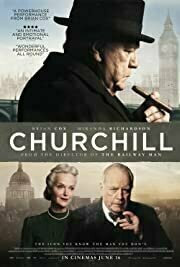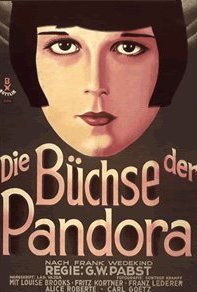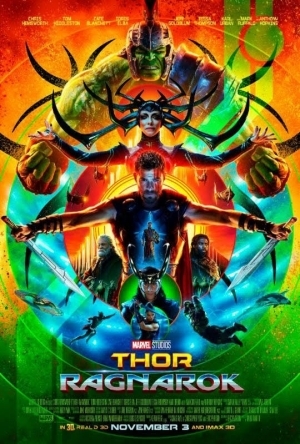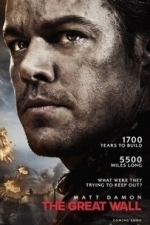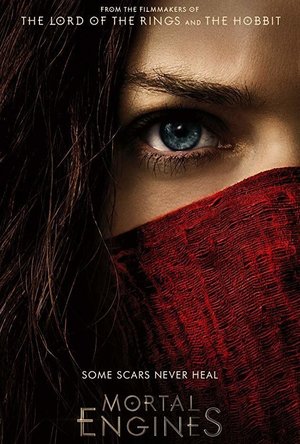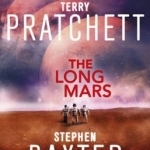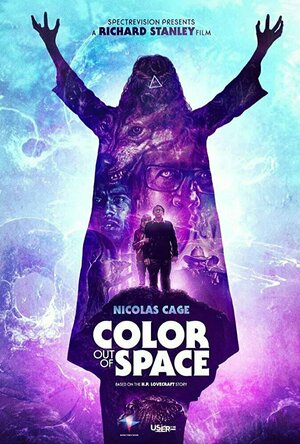Search
Search results
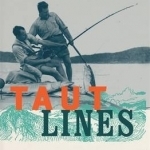
Taut Lines: Extraordinary True Fishing Stories
Book
Since the earliest writings of civilization, people have been writing about fish and the pursuit of...
Bob Mann (459 KP) rated Churchill (2017) in Movies
Sep 29, 2021
“We will bore them on the beaches”.
“Churchill” tells the story of the great leader’s extreme opposition to “Operation Overlord”, the Eisenhower-led invasion of Normandy in 1944 that ultimately led – more by luck that judgement perhaps – to the fall of the Third Reich in the following year.
I’m not a historian but am married to one, so know the importance of “sources” in the pursuit of “truth”: one man’s terrorist is after all another man’s freedom fighter from a different perspective. Some sources on the internet (here for example) certainly suggest the The British (led by Churchill as Prime Minister) might have sensibly promoted the acceleration of the Italian campaign to reach Berlin rather than the far riskier Channel crossing.
This film however paints Churchill as a man demonised by his decision to send young men to their deaths in the fateful Gallipoli beach landings of World War One, with this – rather than a sensible strategic one – being the primary reason for opposing the Normandy landings. To further paint him as a bumbling old fool that is “worked around” by his peers strikes you as borderline libellous.
So the film’s script, by novice Alex von Tunzelmann, immediately set the wrong tone with me, and the undeniably strong performances of Brian Cox (“The Bourne Identity”) as Churchill and the wonderful Miranda Richardson (“Harry Potter” and the soon to be released “Stronger”) as Clemmie can’t fill the gap.
Besides anything else, diretor Jonathan Teplitzky (“The Railway Man”) delivers a piece so dull and lifeless, and with so much brooding, that its not remotely enjoyable. You think the introduction of a bullied secretary – Ms Garrett (Ella Purnell) – with a strong personal connection to ‘Overlord’ will add dramatic colour? But this angle too seems to go nowhere in particular.
There are many tales of the Normandy landings that are fascinating, over and above the dramatic sweep of “The Longest Day” (which is surely well overdue for a remake?) and Spielberg’s fictionalisation of the Niland brothers in “Saving Private Ryan”. How about the 2 out of 29 American amphibious tanks that reached Omaha beach after ignoring British advice to not launch so far from shore in rough seas?
So, as a film, it might be “worthy”. But I didn’t remotely believe the depiction of Churchill and it astonished me that such a rivetingly exciting period of British history could deliver a film that bored me. So, sorry, can’t recommend this one. Perhaps Joe Wright will have a better go with Gary Oldman as Churchill in “Darkest Hour”…
I’m not a historian but am married to one, so know the importance of “sources” in the pursuit of “truth”: one man’s terrorist is after all another man’s freedom fighter from a different perspective. Some sources on the internet (here for example) certainly suggest the The British (led by Churchill as Prime Minister) might have sensibly promoted the acceleration of the Italian campaign to reach Berlin rather than the far riskier Channel crossing.
This film however paints Churchill as a man demonised by his decision to send young men to their deaths in the fateful Gallipoli beach landings of World War One, with this – rather than a sensible strategic one – being the primary reason for opposing the Normandy landings. To further paint him as a bumbling old fool that is “worked around” by his peers strikes you as borderline libellous.
So the film’s script, by novice Alex von Tunzelmann, immediately set the wrong tone with me, and the undeniably strong performances of Brian Cox (“The Bourne Identity”) as Churchill and the wonderful Miranda Richardson (“Harry Potter” and the soon to be released “Stronger”) as Clemmie can’t fill the gap.
Besides anything else, diretor Jonathan Teplitzky (“The Railway Man”) delivers a piece so dull and lifeless, and with so much brooding, that its not remotely enjoyable. You think the introduction of a bullied secretary – Ms Garrett (Ella Purnell) – with a strong personal connection to ‘Overlord’ will add dramatic colour? But this angle too seems to go nowhere in particular.
There are many tales of the Normandy landings that are fascinating, over and above the dramatic sweep of “The Longest Day” (which is surely well overdue for a remake?) and Spielberg’s fictionalisation of the Niland brothers in “Saving Private Ryan”. How about the 2 out of 29 American amphibious tanks that reached Omaha beach after ignoring British advice to not launch so far from shore in rough seas?
So, as a film, it might be “worthy”. But I didn’t remotely believe the depiction of Churchill and it astonished me that such a rivetingly exciting period of British history could deliver a film that bored me. So, sorry, can’t recommend this one. Perhaps Joe Wright will have a better go with Gary Oldman as Churchill in “Darkest Hour”…
RəX Regent (349 KP) rated Pandora's Box (1929) in Movies
Feb 18, 2019
Pandora’s Box was one of the last films of the silent era, a period of transition to sound which I believe set the art of cinematography back a decade.
In short. Pandora’s Box looks stunning! Using the frame to its fullest, with a combination of wide framing and exploiting the art of the close up as Lulu herself, would the men around her, as well as driven by brilliant performances by most of the cast. But kudos needs to go to the star, Louise Brooks, as she portrays Lulu, the alluring flapper girl who can work her innocent, secutive magic on anyone, men and women alike.
But this is not limited to the narrative’s characters as her performance is subtle and underplayed, oozing out the silver screen and seducing the audience with same allure. If looks could kill, then this movie has them all.
With a sparse use of inter-titles, the film relies on both the physicality of the cast and imaginative cinematography to convey the seductive and danger of the events as they unfold over the two and bit hour runtime. Fritz Korner in particular rivals Brooks with the intensity of his performance as the ill fated husband of the girl about town.
And then there’s Alice Roberts, the Countess, who is widely thought to have the first lesbian to be seen on screen. Only Belgian actress’s second film in her short career, is played very Germanic, yet sympathetic as she too, has been drawn under Lulu’s spell.
This was made during the period in which German cinema was ruling, driving the art form from the nickelodeon to the theatre, but this was about to change in the 1930’s with advent of the sound and the golden age of American cinema. But as this film proves, you do not need sound to tell or show a good story.
Granted, the central story is pretty mediocre; a simple tale of a damaged woman who instinctively uses her allure to get her own way yet not as a diva, just an instinctive manipulator, casting her spell far and wide until that spell leads her into the hands London serial killer, Jack The Ripper (Gustav Diessl). But she is never portrayed as evil or scheming, just as herself as those around her are drawn to her aide.
There is little of the pantamine action or motives that you can expect from this genre even now, 90 years on.
But German director G.W. Pabst manages to create a multi-layered tale, deepened by psychological and social subtext, achieved as much because of the relationship he garnered with the star, Brookes, as he played on her natural talents to bring one of cinemas most defining roles to the screen. This would be the first of two collaborations between the director and the wayward starlet that year.
Pandora’s Box is yet another example of how German Cinema was leading the world back in the 1920’s; and even though the second world war may have brought this golden era to an abrupt end, it’s legacy lives on today with the styles, both in front and behind the camera, still being honoured by entire film industry now and hopefully for decades to come.
In short. Pandora’s Box looks stunning! Using the frame to its fullest, with a combination of wide framing and exploiting the art of the close up as Lulu herself, would the men around her, as well as driven by brilliant performances by most of the cast. But kudos needs to go to the star, Louise Brooks, as she portrays Lulu, the alluring flapper girl who can work her innocent, secutive magic on anyone, men and women alike.
But this is not limited to the narrative’s characters as her performance is subtle and underplayed, oozing out the silver screen and seducing the audience with same allure. If looks could kill, then this movie has them all.
With a sparse use of inter-titles, the film relies on both the physicality of the cast and imaginative cinematography to convey the seductive and danger of the events as they unfold over the two and bit hour runtime. Fritz Korner in particular rivals Brooks with the intensity of his performance as the ill fated husband of the girl about town.
And then there’s Alice Roberts, the Countess, who is widely thought to have the first lesbian to be seen on screen. Only Belgian actress’s second film in her short career, is played very Germanic, yet sympathetic as she too, has been drawn under Lulu’s spell.
This was made during the period in which German cinema was ruling, driving the art form from the nickelodeon to the theatre, but this was about to change in the 1930’s with advent of the sound and the golden age of American cinema. But as this film proves, you do not need sound to tell or show a good story.
Granted, the central story is pretty mediocre; a simple tale of a damaged woman who instinctively uses her allure to get her own way yet not as a diva, just an instinctive manipulator, casting her spell far and wide until that spell leads her into the hands London serial killer, Jack The Ripper (Gustav Diessl). But she is never portrayed as evil or scheming, just as herself as those around her are drawn to her aide.
There is little of the pantamine action or motives that you can expect from this genre even now, 90 years on.
But German director G.W. Pabst manages to create a multi-layered tale, deepened by psychological and social subtext, achieved as much because of the relationship he garnered with the star, Brookes, as he played on her natural talents to bring one of cinemas most defining roles to the screen. This would be the first of two collaborations between the director and the wayward starlet that year.
Pandora’s Box is yet another example of how German Cinema was leading the world back in the 1920’s; and even though the second world war may have brought this golden era to an abrupt end, it’s legacy lives on today with the styles, both in front and behind the camera, still being honoured by entire film industry now and hopefully for decades to come.
Gareth von Kallenbach (980 KP) rated Thor: Ragnarok (2017) in Movies
Jun 19, 2019
One of the biggest challenges with an ongoing series is crafting a story that is on par or better than the prior offering and that the characters continue to grow so audiences do not get a rehash of what they have seen before.
With “Thor Ragnarok” Chris Hemsworth has returned for his third solo outing, and fifth outing overall as the heroic Asgardian warrior Thor.
This time out Thor is on his quest to track down the Infinity Stones and finds himself plagued by visions of Ragnarok: a legend detailing the fiery destruction of his home of Asgard.
With an action laden opening, Thor believes he has ended the threat and returns home to find his father Odin (Sir Anthony Hopkins), has been sent to Earth and his evil brother Loki (Tom Hiddleston) assuming his place.
Thor ventures to Earth with his brother which sets a series of events into motion, the result of which unleashes the long imprisoned Hela (Cate Blanchett), who plans the subjugation of Thor and Asgard. Naturally Thor is not going to put up with this, but finds himself mid battle knocked out of his transit home and on a remote world called Sakaar.
As if being stranded far from home is not enough of a challenge, Thor is forced to become a gladiator for the erratic Grandmaster (Jeff Goldblum), whom Loki has managed to charm and become a part of his inner circle.
As fate has it, Thor becomes matched with The Hulk (Mark Ruffalo), and must find a way to survive and make his way home before Hella can destroy all that he holds precious.
The film is the best of the Thor films and it is engaging from start to finish. There is a significant amount of humor in the film but it does not feel forced and is very appropriate to many of the scenes. The film also has plenty of action and the blend between comedy and action is deftly handed by Director TaiKa Waititi who never lets the film become a parody of itself nor take itself too seriously at times. He knows when there is a time to laugh and when there is a time to be deathly serious.
This allows for a deeper and more enjoyable and engaging Thor than has been previously seen. He is not as one-dimensional as he has been in the past as the strong, quick to anger muscle that I would love to see explored in further outings.
I had worried from the trailers that the movie might be more of a video game as it seemed heavily dependent on retro style CGI and camp humor which made it seem like something out of the 80s. While there are elements of that, the film mixes the old and new to create one of the most authentic and enjoyable comic adaptations seen to date. It continues the winning formula of Marvel Studios and of course, sets up the next outing for Thor in “Avengers: Infinity War” as well as the larger Marvel Universe as we a whole. The film also has some great cameos and I am curious to see how the addition of the newly introduced characters will be explored down the road. The return of Hiddleston was also a real treat as he is so good as the mercurial but always sly and dangerous Loki that he commands your complete attention every time he appears on screen.
Marvel has once again set very high standards for comic based movies and has again delivered another winner that you will not want to miss.
http://sknr.net/2017/11/01/thor-ragnarok-2/
With “Thor Ragnarok” Chris Hemsworth has returned for his third solo outing, and fifth outing overall as the heroic Asgardian warrior Thor.
This time out Thor is on his quest to track down the Infinity Stones and finds himself plagued by visions of Ragnarok: a legend detailing the fiery destruction of his home of Asgard.
With an action laden opening, Thor believes he has ended the threat and returns home to find his father Odin (Sir Anthony Hopkins), has been sent to Earth and his evil brother Loki (Tom Hiddleston) assuming his place.
Thor ventures to Earth with his brother which sets a series of events into motion, the result of which unleashes the long imprisoned Hela (Cate Blanchett), who plans the subjugation of Thor and Asgard. Naturally Thor is not going to put up with this, but finds himself mid battle knocked out of his transit home and on a remote world called Sakaar.
As if being stranded far from home is not enough of a challenge, Thor is forced to become a gladiator for the erratic Grandmaster (Jeff Goldblum), whom Loki has managed to charm and become a part of his inner circle.
As fate has it, Thor becomes matched with The Hulk (Mark Ruffalo), and must find a way to survive and make his way home before Hella can destroy all that he holds precious.
The film is the best of the Thor films and it is engaging from start to finish. There is a significant amount of humor in the film but it does not feel forced and is very appropriate to many of the scenes. The film also has plenty of action and the blend between comedy and action is deftly handed by Director TaiKa Waititi who never lets the film become a parody of itself nor take itself too seriously at times. He knows when there is a time to laugh and when there is a time to be deathly serious.
This allows for a deeper and more enjoyable and engaging Thor than has been previously seen. He is not as one-dimensional as he has been in the past as the strong, quick to anger muscle that I would love to see explored in further outings.
I had worried from the trailers that the movie might be more of a video game as it seemed heavily dependent on retro style CGI and camp humor which made it seem like something out of the 80s. While there are elements of that, the film mixes the old and new to create one of the most authentic and enjoyable comic adaptations seen to date. It continues the winning formula of Marvel Studios and of course, sets up the next outing for Thor in “Avengers: Infinity War” as well as the larger Marvel Universe as we a whole. The film also has some great cameos and I am curious to see how the addition of the newly introduced characters will be explored down the road. The return of Hiddleston was also a real treat as he is so good as the mercurial but always sly and dangerous Loki that he commands your complete attention every time he appears on screen.
Marvel has once again set very high standards for comic based movies and has again delivered another winner that you will not want to miss.
http://sknr.net/2017/11/01/thor-ragnarok-2/
Bob Mann (459 KP) rated The Great Wall (2016) in Movies
Sep 29, 2021
Exercising your Damons.
Millions of people watching the Oscars would have seen Jimmy Kimmel roasting poor Matt Damon as a part of their long running ‘feud’. At one point he points out that Matt gave up the leading role in “Manchester by the Sea” to star in a “Chinese ponytail movie” that “went on to lose $80 million at the box office”. “The Great Wall” is that movie!
So is it really that bad?
Well, it’s no “Manchester by the Sea” for sure. But I don’t think it’s quite the total turkey that critics have been labelling it as either. I went to see it on a Sunday afternoon, and approaching it as a matinee bit of frothy action is a good mental state to be in.
Matt Damon plays the ponytailed-wonder William, a European mercenary travelling in 11th Century China with his colleague Tovar (Pedro Pascal) in an attempt to determine the secrets of black powder – a secret well-guarded by the Chinese. Captured by the ‘New Order’ at the Great Wall and imprisoned there by General Shao (Hanyu Zhang), William earns the respect of Shao and his beautiful warrior second-in-command Lin Mae (Tian Jing) with his bowmanship. This is almost immediately put to use by the arrival (after 60 year’s absence – a funny thing, timing, isn’t it?) of hoards of vicious creatures called Taoties. (I thought they said Tauntauns initially, so was expecting some sort of Chinese/Star Wars crossover! But no.)
Taoties who scale the wall are defeated by William who poleaxes them. (This is an attempt at brilliant humour to anyone who has already seen the film – poleaxe…. get it? POLEaxe. Oh, never mind!) Despite being a mercenary at heart, William is torn between staying and helping Lin Mae fight the beasts and fleeing with Tovar, their new chum Ballard (Willem Dafoe) and their black powder loot. (I’m sure something about Lin Mae’s tight-fitting blue armour was influential in his decision).
This is an historic film in that although in recent years there has been cross-fertilization of Chinese actors into Western films for box-office reasons (for example, in the appalling “Independence Day: Resurgence” and the much better Damon vehicle “The Martian“) this was the first truly co-produced Chinese/Hollywood feature filmed entirely in China. It might also be the last given the film’s $150 million budget and the dismal box-office!
To start with some positives, you can rely on a Chinese-set film (the film location was Qingdao) to allow the use of an army of extras and – although a whole bunch of CGI was also no doubt used – some of the battles scenes are impressive. There is a stirring choral theme by Ramin Djawadi (best known for his TV themes for “Game of Thrones” and the brilliant “Westworld”) played over silk-screen painted end titles that just make for a beautiful combination. And Tian Jing as the heroine Lin Mae is not only stunningly good-looking but also injects some much needed acting talent into the cast, where most of those involved (including Damon himself) look like they would rather be somewhere else.
And some of the action scenes are rather fun in a ‘park your brain by the door’ sort of way, including (nonsensically) cute warrior girls high-diving off the wall on bungey ropes to near certain death. While the CGI monsters are of the (yawn) over-the-top LoTR variety, their ability to swarm like locusts at the Queen’s command is also quite entertainingly rendered.
Where the movie balloon comes crashing down to earth in flames though is with the story and the screenplay – all done by three different people each, which is NEVER a good sign.
The story (by Max Brooks (“World War Z”), Edward Zwick and Marshall Herskovitz (both on “The Last Samurai”) is plain nonsensical at times. No spoilers here, but the transition from “wall under siege” to “wall not under siege” gives the word ‘clunky’ a bad name. As another absurdity, the “New Order” seem amazed how William was able to slay one of the creatures (thanks to the poleaxing ‘McGuffin’ previously referenced) but then throughout the rest of the film he slays creatures left right and centre (McGuffin-less) through just the use of a spear or an arrow! Bonkers.
Things get worse when you add words to the actions. The screenplay by Carlo Bernard and Doug Miro (both “Prince of Persia: The Sands of Time”) and Tony Gilroy (Tony Gilroy? Surely not he of all the “Bourne” films and “Rogue One” fame? The very same!) has a reading age of about an 8 year old. It feels like it has been translated into Chinese and then back again to English with Google Translate. “Is that the best you can do?” asks Tovar to William at one point. I was thinking exactly the same thing.
The combination of the cinematography and the special effects have the unfortunate effect of giving the film the veneer of a video game, but this is one where your kid-brother has stolen the controls and refuses to give them back to you.
Having had the great thrill of visiting a section of The Great Wall near Beijing, I can confirm that it is an astonishing engineering masterpiece that has to be seen to be truly believed. It ranks as one of the genuine wonders of the world. The same can not be said of this movie. Early teens might enjoy it as a mindless action flick. But otherwise best avoided until it emerges on a raining Sunday afternoon on the TV.
So is it really that bad?
Well, it’s no “Manchester by the Sea” for sure. But I don’t think it’s quite the total turkey that critics have been labelling it as either. I went to see it on a Sunday afternoon, and approaching it as a matinee bit of frothy action is a good mental state to be in.
Matt Damon plays the ponytailed-wonder William, a European mercenary travelling in 11th Century China with his colleague Tovar (Pedro Pascal) in an attempt to determine the secrets of black powder – a secret well-guarded by the Chinese. Captured by the ‘New Order’ at the Great Wall and imprisoned there by General Shao (Hanyu Zhang), William earns the respect of Shao and his beautiful warrior second-in-command Lin Mae (Tian Jing) with his bowmanship. This is almost immediately put to use by the arrival (after 60 year’s absence – a funny thing, timing, isn’t it?) of hoards of vicious creatures called Taoties. (I thought they said Tauntauns initially, so was expecting some sort of Chinese/Star Wars crossover! But no.)
Taoties who scale the wall are defeated by William who poleaxes them. (This is an attempt at brilliant humour to anyone who has already seen the film – poleaxe…. get it? POLEaxe. Oh, never mind!) Despite being a mercenary at heart, William is torn between staying and helping Lin Mae fight the beasts and fleeing with Tovar, their new chum Ballard (Willem Dafoe) and their black powder loot. (I’m sure something about Lin Mae’s tight-fitting blue armour was influential in his decision).
This is an historic film in that although in recent years there has been cross-fertilization of Chinese actors into Western films for box-office reasons (for example, in the appalling “Independence Day: Resurgence” and the much better Damon vehicle “The Martian“) this was the first truly co-produced Chinese/Hollywood feature filmed entirely in China. It might also be the last given the film’s $150 million budget and the dismal box-office!
To start with some positives, you can rely on a Chinese-set film (the film location was Qingdao) to allow the use of an army of extras and – although a whole bunch of CGI was also no doubt used – some of the battles scenes are impressive. There is a stirring choral theme by Ramin Djawadi (best known for his TV themes for “Game of Thrones” and the brilliant “Westworld”) played over silk-screen painted end titles that just make for a beautiful combination. And Tian Jing as the heroine Lin Mae is not only stunningly good-looking but also injects some much needed acting talent into the cast, where most of those involved (including Damon himself) look like they would rather be somewhere else.
And some of the action scenes are rather fun in a ‘park your brain by the door’ sort of way, including (nonsensically) cute warrior girls high-diving off the wall on bungey ropes to near certain death. While the CGI monsters are of the (yawn) over-the-top LoTR variety, their ability to swarm like locusts at the Queen’s command is also quite entertainingly rendered.
Where the movie balloon comes crashing down to earth in flames though is with the story and the screenplay – all done by three different people each, which is NEVER a good sign.
The story (by Max Brooks (“World War Z”), Edward Zwick and Marshall Herskovitz (both on “The Last Samurai”) is plain nonsensical at times. No spoilers here, but the transition from “wall under siege” to “wall not under siege” gives the word ‘clunky’ a bad name. As another absurdity, the “New Order” seem amazed how William was able to slay one of the creatures (thanks to the poleaxing ‘McGuffin’ previously referenced) but then throughout the rest of the film he slays creatures left right and centre (McGuffin-less) through just the use of a spear or an arrow! Bonkers.
Things get worse when you add words to the actions. The screenplay by Carlo Bernard and Doug Miro (both “Prince of Persia: The Sands of Time”) and Tony Gilroy (Tony Gilroy? Surely not he of all the “Bourne” films and “Rogue One” fame? The very same!) has a reading age of about an 8 year old. It feels like it has been translated into Chinese and then back again to English with Google Translate. “Is that the best you can do?” asks Tovar to William at one point. I was thinking exactly the same thing.
The combination of the cinematography and the special effects have the unfortunate effect of giving the film the veneer of a video game, but this is one where your kid-brother has stolen the controls and refuses to give them back to you.
Having had the great thrill of visiting a section of The Great Wall near Beijing, I can confirm that it is an astonishing engineering masterpiece that has to be seen to be truly believed. It ranks as one of the genuine wonders of the world. The same can not be said of this movie. Early teens might enjoy it as a mindless action flick. But otherwise best avoided until it emerges on a raining Sunday afternoon on the TV.
Gareth von Kallenbach (980 KP) rated Mortal Engines (2018) in Movies
Jul 2, 2019
Take a moment and imagine a world where most of humanity has been wiped off the map and those that remain are forced to survive on the remaining resources of a civilization that has been torn apart. In this new existence, leftover technology is coveted like diamonds and massive predator cities prey on weaker smaller cities to steal whatever meager resources they still possess. This is the world of Mortal Engines, the latest Peter Jackson blockbuster based on the young adult novel of the same name by Philip Reeves.
Mortal Engines takes place roughly a thousand years after the conclusion of the Sixty Minute War that decimated the earth and now civilization has banded into two very distinct groups. There are those in the “Traction Cities”, which are behemoth mobile cities that scour what remains of Europe gobbling up smaller cities to convert them and their resources into fuel that keeps the larger cities moving. Then there is the Anti-Traction League, a group that believes in preserving what little resources remain and living in “Traction-less” cities…a.k.a. cities built on land. London is the main Traction City and it is led by Thaddeus Valentine (Hugo Weaving) and his desire to tear down a great wall that is the only barrier between London and the surplus of resources that he so desperately needs.
After London devours one of the smaller cities, we are introduced to Hester Shaw (Hera Hilmar), whose one goal in life is to kill Thaddeus Valentine, the man who murdered her mother. After her failed assassination attempt on his life, she teams up with historian Tom Natsworthy (Robert Sheehan) to not only survive, but also to prevent Valentine’s plan to recreate the war that took down humanity in the first place. This is a big job for the unlikely duo and on top of everything else, Hester is being hunted by a zombie/terminator hybrid named Shrike who wants nothing more than to kill her.
If it sounds like a lot to follow over the course of the two hours and nine-minute run time, you’d be right. In fact, without a lot of backstory which those who have read the novels will really benefit from, it can be a bit too much to take in. It comes across as a combination of Mad Max and the video game Dishonored, but it is lacking an excellent story to back up all of the post-apocalyptic action. That’s not to say that the story is bad, but it is by far the weakest part of the film and a huge missed opportunity to elevate a pretty good movie to the classic Peter Jackson masterpiece status we usually get from him. Considering the genius of Mr. Jackson this movie could have been so much more.
But now on to the good stuff…
Visually speaking Mortal Engines is a true work of art. Taking the steampunk Victorian era backdrop and adding in large mobile cities crashing through trees and forests gives us visuals that are not only magnificent, but also awe inspiring. I was lucky enough to see Mortal Engines in IMAX and the larger screen only helped to emphasize how truly awesome these large rolling cities are. This is a movie that is meant to be seen on the big screen, and with Mortal Engines, the bigger the better. The sound design matches the visuals in its epic scale, as it is loud and menacing. You can actually feel the rumble of the large treads as they move across the earth, and the crunching of smaller cities as the massive cities devour all that crosses their path. The casting and the acting were another positive as the good characters were ones you wanted to root for and the bad characters you hope would get what’s coming to them. All in all, there is quite a bit to like in this film and if nothing else you are sure to have a good time taking in all of the scenery.
In summary, Mortal Engines is a movie that feels as though it had so much potential but couldn’t quite live up to it. It definitely feels more like a summer blockbuster, full of explosions and action, instead of the deeper holiday releases that we usually get around this time. It’s the kind of movie that you go to see for the sheer spectacle of it all as long as you are willing to overlook any plot or story depth. Unfortunately, this leaves the quandary of whether or not it’s worth the full price of admission (or even more if you are planning to see it in IMAX) and my answer to that is…it depends. If you have any interest in seeing it at all then Mortal Engines is definitely a movie you should see on the big screen. On the other hand, it might be worth it to just wait to see it on pay-per-view or Blu-ray even though it may lose a lot of what makes the movie so much fun in the first place. While the movie could have been better, I have definitely seen worse and if the idea of massive rolling cities and steampunk set pieces are your thing, then Mortal Engines is certainly worth a look.
Mortal Engines takes place roughly a thousand years after the conclusion of the Sixty Minute War that decimated the earth and now civilization has banded into two very distinct groups. There are those in the “Traction Cities”, which are behemoth mobile cities that scour what remains of Europe gobbling up smaller cities to convert them and their resources into fuel that keeps the larger cities moving. Then there is the Anti-Traction League, a group that believes in preserving what little resources remain and living in “Traction-less” cities…a.k.a. cities built on land. London is the main Traction City and it is led by Thaddeus Valentine (Hugo Weaving) and his desire to tear down a great wall that is the only barrier between London and the surplus of resources that he so desperately needs.
After London devours one of the smaller cities, we are introduced to Hester Shaw (Hera Hilmar), whose one goal in life is to kill Thaddeus Valentine, the man who murdered her mother. After her failed assassination attempt on his life, she teams up with historian Tom Natsworthy (Robert Sheehan) to not only survive, but also to prevent Valentine’s plan to recreate the war that took down humanity in the first place. This is a big job for the unlikely duo and on top of everything else, Hester is being hunted by a zombie/terminator hybrid named Shrike who wants nothing more than to kill her.
If it sounds like a lot to follow over the course of the two hours and nine-minute run time, you’d be right. In fact, without a lot of backstory which those who have read the novels will really benefit from, it can be a bit too much to take in. It comes across as a combination of Mad Max and the video game Dishonored, but it is lacking an excellent story to back up all of the post-apocalyptic action. That’s not to say that the story is bad, but it is by far the weakest part of the film and a huge missed opportunity to elevate a pretty good movie to the classic Peter Jackson masterpiece status we usually get from him. Considering the genius of Mr. Jackson this movie could have been so much more.
But now on to the good stuff…
Visually speaking Mortal Engines is a true work of art. Taking the steampunk Victorian era backdrop and adding in large mobile cities crashing through trees and forests gives us visuals that are not only magnificent, but also awe inspiring. I was lucky enough to see Mortal Engines in IMAX and the larger screen only helped to emphasize how truly awesome these large rolling cities are. This is a movie that is meant to be seen on the big screen, and with Mortal Engines, the bigger the better. The sound design matches the visuals in its epic scale, as it is loud and menacing. You can actually feel the rumble of the large treads as they move across the earth, and the crunching of smaller cities as the massive cities devour all that crosses their path. The casting and the acting were another positive as the good characters were ones you wanted to root for and the bad characters you hope would get what’s coming to them. All in all, there is quite a bit to like in this film and if nothing else you are sure to have a good time taking in all of the scenery.
In summary, Mortal Engines is a movie that feels as though it had so much potential but couldn’t quite live up to it. It definitely feels more like a summer blockbuster, full of explosions and action, instead of the deeper holiday releases that we usually get around this time. It’s the kind of movie that you go to see for the sheer spectacle of it all as long as you are willing to overlook any plot or story depth. Unfortunately, this leaves the quandary of whether or not it’s worth the full price of admission (or even more if you are planning to see it in IMAX) and my answer to that is…it depends. If you have any interest in seeing it at all then Mortal Engines is definitely a movie you should see on the big screen. On the other hand, it might be worth it to just wait to see it on pay-per-view or Blu-ray even though it may lose a lot of what makes the movie so much fun in the first place. While the movie could have been better, I have definitely seen worse and if the idea of massive rolling cities and steampunk set pieces are your thing, then Mortal Engines is certainly worth a look.
Phil Leader (619 KP) rated The Long Mars in Books
Nov 20, 2019
The third book in the Long Earth series by Terry Pratchett and Stephen Baxter very much carries on with 'more of the same' as the previous books. Therefore if you haven't liked the series up until now, you probably won't like this installment.
The usual characters are here. Lobsang is less in evidence than previously, despite driving what is the core of the book. Joshua is also a little sidelined as his story is tied closely to that of Lobsang. The bulk of the actual pages are concerned with Sally Lindsay and Maggie Kaufmann as they set off on their own voyages of discovery on the seemingly infinite copies of Earth and - not too much of a spoiler since it's in the title - Mars.
Whereas the previous books have essentially had one thread of a story around which the characters revolve towards some sort of end. This book seems more as if the authors couldn't really decide what they wanted to write about.
Should they write about more versions of the Long Earth, more fantastic worlds and lifeforms? Or perhaps investigate what has really been happening at Happy Landings, the seemingly too perfect town which existed long before Step Day? Or perhaps you are Stephen Baxter and can't resist going to Mars and showing many stepwise possibilities for that planet?
Rather than focus on one of these, all three are covered.
Maggie Kaufmann takes a brand new Twain far beyond the current limits of exploration into completely uncharted - and very strange - worlds. She must deal with the crew during their long trip, a surprise guest and aims to find out what happened to a previous expedition that vanished. Once again Pratchett and Baxter dig up some potentially different outcomes for both life on Earth and the planet itself, although many of the worlds are skimmed over and this part does get a little repetitive - another world, another odd ecology. This thread did feel a little like filler, there for those who want to see what might happen at the extremes of the Long Earth, although events do tie in with Lobsang's story.
Lobsang (the omnipresent super computer) has become concerned with matters of existence and what might come after. In particular is the human race evolving? He asks Joshua to help out and discover if there is any evidence for a breed of super human evolving as Lobsang theorises there must be. It seemed to me this is the real story of the book, a query on what would happen if a vastly more intelligent form of humanity evolved as a step change rather than a gradual one. What would they do? Would the rest of humanity accept them or feel threatened by them? The thread is short - barely more than an essay - and takes a good while to work through but provides the ultimate ending to the book.
Meanwhile, Sally Lindsay finds herself at The Gap, preparing to visit Mars, part of some mysterious quest for 'something' by her father. Here Baxter's history of writing Mars colonisation stories (they even get a mention) comes to the fore as the possibilities of a Long Mars are explored. In the real world Mars is cold, arid and inhospitable but there may be the odd chance for life to have developed. What would this be like? Again we have many different worlds although these are skipped through a little better than the Maggie Kaufmann Long Earth voyage and seem a little less repetitive - or where there is repetition it is more interesting than mundane.
Overall this is a good read in the series, probably a little better than The Long War but again lacking the coherence and sheer enthusiasm of The Long Earth (perhaps inevitably). As a work of science fiction it works well - the broad brush 'imaginary worlds' of the Long Earth and the Long Mars juxtaposed by the more existential investigation into human evolution.
Would I read a fourth installment? Undoubtedly, there are stories yet to be told. Would I recommend this book? Only if the recommendee had enjoyed the previous two books.
The usual characters are here. Lobsang is less in evidence than previously, despite driving what is the core of the book. Joshua is also a little sidelined as his story is tied closely to that of Lobsang. The bulk of the actual pages are concerned with Sally Lindsay and Maggie Kaufmann as they set off on their own voyages of discovery on the seemingly infinite copies of Earth and - not too much of a spoiler since it's in the title - Mars.
Whereas the previous books have essentially had one thread of a story around which the characters revolve towards some sort of end. This book seems more as if the authors couldn't really decide what they wanted to write about.
Should they write about more versions of the Long Earth, more fantastic worlds and lifeforms? Or perhaps investigate what has really been happening at Happy Landings, the seemingly too perfect town which existed long before Step Day? Or perhaps you are Stephen Baxter and can't resist going to Mars and showing many stepwise possibilities for that planet?
Rather than focus on one of these, all three are covered.
Maggie Kaufmann takes a brand new Twain far beyond the current limits of exploration into completely uncharted - and very strange - worlds. She must deal with the crew during their long trip, a surprise guest and aims to find out what happened to a previous expedition that vanished. Once again Pratchett and Baxter dig up some potentially different outcomes for both life on Earth and the planet itself, although many of the worlds are skimmed over and this part does get a little repetitive - another world, another odd ecology. This thread did feel a little like filler, there for those who want to see what might happen at the extremes of the Long Earth, although events do tie in with Lobsang's story.
Lobsang (the omnipresent super computer) has become concerned with matters of existence and what might come after. In particular is the human race evolving? He asks Joshua to help out and discover if there is any evidence for a breed of super human evolving as Lobsang theorises there must be. It seemed to me this is the real story of the book, a query on what would happen if a vastly more intelligent form of humanity evolved as a step change rather than a gradual one. What would they do? Would the rest of humanity accept them or feel threatened by them? The thread is short - barely more than an essay - and takes a good while to work through but provides the ultimate ending to the book.
Meanwhile, Sally Lindsay finds herself at The Gap, preparing to visit Mars, part of some mysterious quest for 'something' by her father. Here Baxter's history of writing Mars colonisation stories (they even get a mention) comes to the fore as the possibilities of a Long Mars are explored. In the real world Mars is cold, arid and inhospitable but there may be the odd chance for life to have developed. What would this be like? Again we have many different worlds although these are skipped through a little better than the Maggie Kaufmann Long Earth voyage and seem a little less repetitive - or where there is repetition it is more interesting than mundane.
Overall this is a good read in the series, probably a little better than The Long War but again lacking the coherence and sheer enthusiasm of The Long Earth (perhaps inevitably). As a work of science fiction it works well - the broad brush 'imaginary worlds' of the Long Earth and the Long Mars juxtaposed by the more existential investigation into human evolution.
Would I read a fourth installment? Undoubtedly, there are stories yet to be told. Would I recommend this book? Only if the recommendee had enjoyed the previous two books.
Hazel (1853 KP) rated Picasso: The Colouring Book in Books
Dec 7, 2018
For a full review, including visual examples, please follow this link: https://hazelstainer.wordpress.com/2017/07/14/picasso-coloured-in/
...
<i>Pablo Picasso: To Colour In</i> was published in April 2016 with the intention of using the popular fad to educate readers/colouring book enthusiasts about the techniques and secrets of the great master. Each work included in the book has a brief paragraph explaining what it is (in case you cannot tell) and a few details about Picasso’s intentions or the events happening in his life at the time.
...
Naturally, it would be impossible to produce a book of all Picasso’s recorded works, but the editors of this particular colouring book have carefully selected examples that span the majority of his life, thus encompassing the different styles he experimented with.
The author of the text – presumably Frédérique Cassegrain, who also wrote the biography and information for each included artwork – gives helpful advice about how to colour in the outlined versions of Picasso’s paintings. The paper is thick enough to be suitable for paints, particular Gouache, which is water soluble and easily blended. Alternatively, coloured pencils may be used, preferably of artistic quality, which may be more suitable for those less confident in art and design. Another option, although not mentioned by the author, are felt-tip pens. Usually, these should be avoided due to ink bleeding through the page, however, the paper is single sided, so there is no chance of damaging the following colouring page in the book.
Purchasing Pablo Picasso: To Colour In and completing the book, provides not only hours of fun and relaxation, but an opportunity to discover and understand the artist. Unlike at a gallery where the brain may switch off, being able to go away and return to the book gives us time to absorb the information and concentrate more clearly on the details of each painting.
Opposite each colouring page is a copy of the original in full colour, meaning that, if one desired, one could replicate Picasso’s work as closely as possible. By doing, rather than just looking, we begin to understand the colour choices, piece together the geometric shapes to form an image and begin to understand the thought processes of the artist.
Interestingly, there are two paintings that stand out amongst all the others. These were produced during and after the First World War, a time when Picasso returned to a more classical style of artwork. These are The Pipes of Pan (1923) and The Bathers (1918). Both show a completely different side to Picasso and would not immediately be recognised as his own work. Despite not being entirely life-like, there are no elements of Cubism or Surrealism and the colour palette is altogether natural. Picasso has focused on shading and tone to create a realistic appearance, a contrast to the flattened portraits he is known for.
...
Pablo Picasso: To Colour In will appeal to artists, art historians and other creatives with its contrast of light relief and in-depth knowledge. The book is available online at retailers such as Amazon and The Book Depository from approximately £6. If Picasso is not your thing, there are other artists available in the series of colouring books, including Klimt, Hokusai (Japanese Art), Monet, Van Gogh, Caillebotte and Manet (Impressionists), and Paul Klee. Whatever your preference, prepare to learn whilst you are relaxing and having fun.
...
<i>Pablo Picasso: To Colour In</i> was published in April 2016 with the intention of using the popular fad to educate readers/colouring book enthusiasts about the techniques and secrets of the great master. Each work included in the book has a brief paragraph explaining what it is (in case you cannot tell) and a few details about Picasso’s intentions or the events happening in his life at the time.
...
Naturally, it would be impossible to produce a book of all Picasso’s recorded works, but the editors of this particular colouring book have carefully selected examples that span the majority of his life, thus encompassing the different styles he experimented with.
The author of the text – presumably Frédérique Cassegrain, who also wrote the biography and information for each included artwork – gives helpful advice about how to colour in the outlined versions of Picasso’s paintings. The paper is thick enough to be suitable for paints, particular Gouache, which is water soluble and easily blended. Alternatively, coloured pencils may be used, preferably of artistic quality, which may be more suitable for those less confident in art and design. Another option, although not mentioned by the author, are felt-tip pens. Usually, these should be avoided due to ink bleeding through the page, however, the paper is single sided, so there is no chance of damaging the following colouring page in the book.
Purchasing Pablo Picasso: To Colour In and completing the book, provides not only hours of fun and relaxation, but an opportunity to discover and understand the artist. Unlike at a gallery where the brain may switch off, being able to go away and return to the book gives us time to absorb the information and concentrate more clearly on the details of each painting.
Opposite each colouring page is a copy of the original in full colour, meaning that, if one desired, one could replicate Picasso’s work as closely as possible. By doing, rather than just looking, we begin to understand the colour choices, piece together the geometric shapes to form an image and begin to understand the thought processes of the artist.
Interestingly, there are two paintings that stand out amongst all the others. These were produced during and after the First World War, a time when Picasso returned to a more classical style of artwork. These are The Pipes of Pan (1923) and The Bathers (1918). Both show a completely different side to Picasso and would not immediately be recognised as his own work. Despite not being entirely life-like, there are no elements of Cubism or Surrealism and the colour palette is altogether natural. Picasso has focused on shading and tone to create a realistic appearance, a contrast to the flattened portraits he is known for.
...
Pablo Picasso: To Colour In will appeal to artists, art historians and other creatives with its contrast of light relief and in-depth knowledge. The book is available online at retailers such as Amazon and The Book Depository from approximately £6. If Picasso is not your thing, there are other artists available in the series of colouring books, including Klimt, Hokusai (Japanese Art), Monet, Van Gogh, Caillebotte and Manet (Impressionists), and Paul Klee. Whatever your preference, prepare to learn whilst you are relaxing and having fun.
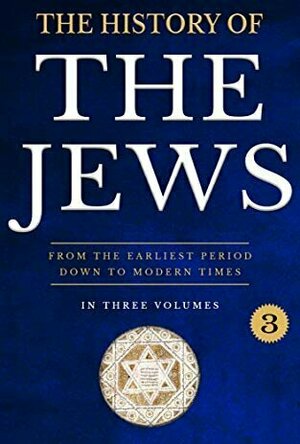
The History of the Jews
Book
The History Of The Jews: From The Earliest Period Down To Modern Times, In Three Volumes. (Vol. 3)...
Jesters_folly (230 KP) rated Color Out of Space (2019) in Movies
Nov 10, 2020
Contains spoilers, click to show
Color out of Space Is a film based on a H.P. Lovecraft staring Nicholas Cage so you know it's going to be weird.
So, tell me if you've heard this one before. A meteor lands on an isolated farm and the farmer and his family have to fight off what it brought with it. If this sound familiar then that because it's been used so often it's become a common Sci-Fi trope but, all tropes have to come from somewhere and the works of Lovecraft have interwoven themselves into many modern works. I mention this because, as well as it's main premise, there are a lot of familiar scenes and concepts. You see creatures that remind you of the 'Thing' and transformations reminiscent of the original 'Quatermass Experiment' as well as creepy kids and a well but you have to remember that Color out of Space is most likely the source material and not the other way round (The Thing it's self is filled with Lovecraftian ideas even though it's based on a story by different author.)
As the films title hints, the actual creature is a color (or Colour if you're English) which is a strange concept in its self and the effects it has on the world around it only unfold slowly but, like in the other films I've mentioned, they end in horror (and body horror).
The theme of colour, even in it's strange use here, leads to the film being pretty in parts and as the film goes on the landscape takes on eerie life of it's own very much like the Martian weed taking over London in 'War of the Worlds'.
The film it's self is odd, you keep expecting the main family to be one of those stereotypical dysfunctional family's but, every time they seem to falling apart they pull together and, even their decent into madness doesn't pull them apart. The whole thing is made even strange by Nicholas Cage who is his usual, over the top self; Throwing tantrums and monologing to people who aren't really there, although, I'm happy to say his performance is not as OTT as it was in 'Mandy' where he went full Cage (which was great for that film but Color out of space is slightly more subdued, slightly but not much.)
There is blood but most of the horror either happens off screen or is just implied and even the monsters are just there just to be seen, although they do have a point to the story.
Color out of Space is a good but slightly strange cosmic horror with Nicholas Cage being as strange as usual aided in his strangeness by Madeleine Arthur, playing his daughter, Lavinia. with the exception of Tommy Chong's Ezra the rest of the cast play it mostly straight.
So, tell me if you've heard this one before. A meteor lands on an isolated farm and the farmer and his family have to fight off what it brought with it. If this sound familiar then that because it's been used so often it's become a common Sci-Fi trope but, all tropes have to come from somewhere and the works of Lovecraft have interwoven themselves into many modern works. I mention this because, as well as it's main premise, there are a lot of familiar scenes and concepts. You see creatures that remind you of the 'Thing' and transformations reminiscent of the original 'Quatermass Experiment' as well as creepy kids and a well but you have to remember that Color out of Space is most likely the source material and not the other way round (The Thing it's self is filled with Lovecraftian ideas even though it's based on a story by different author.)
As the films title hints, the actual creature is a color (or Colour if you're English) which is a strange concept in its self and the effects it has on the world around it only unfold slowly but, like in the other films I've mentioned, they end in horror (and body horror).
The theme of colour, even in it's strange use here, leads to the film being pretty in parts and as the film goes on the landscape takes on eerie life of it's own very much like the Martian weed taking over London in 'War of the Worlds'.
The film it's self is odd, you keep expecting the main family to be one of those stereotypical dysfunctional family's but, every time they seem to falling apart they pull together and, even their decent into madness doesn't pull them apart. The whole thing is made even strange by Nicholas Cage who is his usual, over the top self; Throwing tantrums and monologing to people who aren't really there, although, I'm happy to say his performance is not as OTT as it was in 'Mandy' where he went full Cage (which was great for that film but Color out of space is slightly more subdued, slightly but not much.)
There is blood but most of the horror either happens off screen or is just implied and even the monsters are just there just to be seen, although they do have a point to the story.
Color out of Space is a good but slightly strange cosmic horror with Nicholas Cage being as strange as usual aided in his strangeness by Madeleine Arthur, playing his daughter, Lavinia. with the exception of Tommy Chong's Ezra the rest of the cast play it mostly straight.
